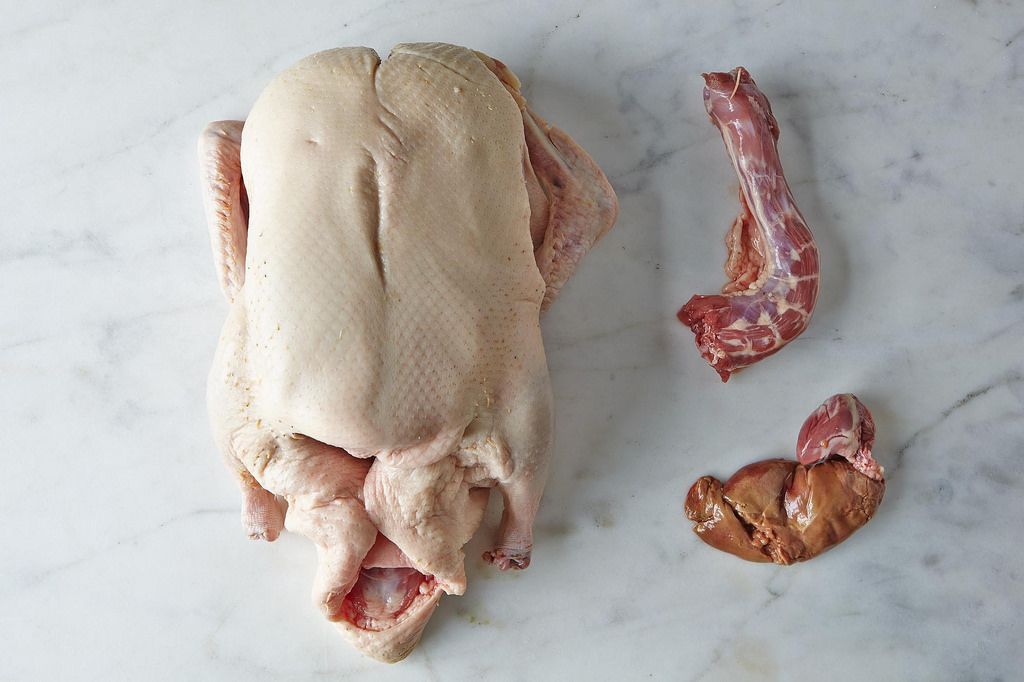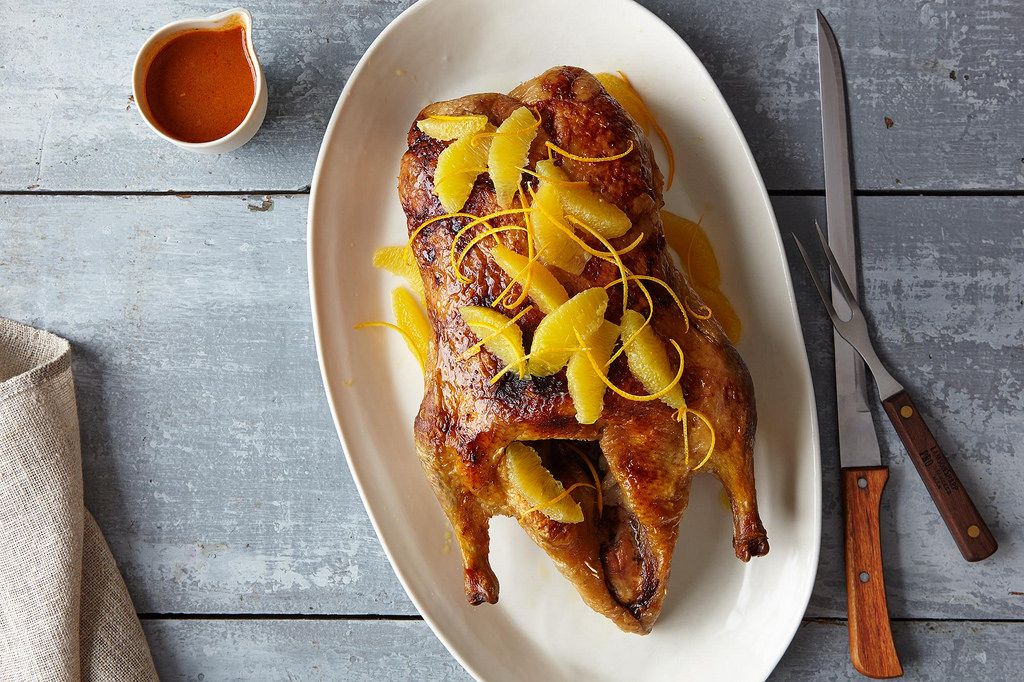A French classic.
Just when you thought you had heard enough talk of roasting birds, here I am. What a jerk! Don’t worry, though; there will be no turkey talk today. Today, it’s all about the duck.
The first time I ever ate duck was at a Peking duck restaurant in Boston’s Chinatown -- it was wrapped in those thin, floury pancakes slathered with plum sauce -- and it was a revelation to me. I was a full-grown adult (kind of) at this point, and I couldn’t believe I had wasted so many years not eating duck. What kind of life was I living? We ate lots of chicken in my house growing up, turkey sometimes, but duck was fancy. I knew this from watching reruns of “The French Chef” on TV, and also from flipping through my parents’ two-volume 1981 Gourmet cookbooks. In the photographs, ducks were never simply roasted like a chicken, with half a lemon and some garlic shoved inside. They were always glossy and shimmering, festooned with pineapple rings and maraschino cherries. As silly as these photographs are, they were telling the truth about cooking a duck: Duck doesn’t have to be fancy, but preparing one does take a little bit more patience and care than a chicken.

In a lot of ways, duck is closer to beef than it is to poultry. It is rich and indulgent -- there is nothing abstemious or diet-y about duck. Like beef, well-raised duck can also be served medium-rare. Part of the reason for this is that, because duck is much less popular in the United States, the conditions in which ducks are raised are generally much better than those of more popular birds. The popularity of chicken and turkey leads to factory-farm conditions, which leads to the spread of salmonella and other bacteria. (General rule: Buy well-raised meat. Always.)
Unlike chicken and turkey -- popular for being such excellent sources of lean protein -- duck is notoriously fatty. Have you ever seen a duck burger on a diet menu? No.
Ducks need this extra fat to keep warm and stay buoyant on icy ponds, but it can make preparing them and getting a good, crisp skin slightly more difficult. The good news is that the excess fat you'll trim off of your duck doesn’t have to go to waste. Duck fat is an incredible cooking fat, it makes everything richer -- your potatoes, your green beans, even your cookies!
Here is the dish I begged my mom to make as a kid, long before I had ever tried duck, just because it looked and sounded so dang delicious and fancy: Duck à l’Orange. In developing this recipe, I combined a modified version of the classic Julia Child recipe with the technique I use for making Peking duck -- the result is a super-crispy skin and a beautiful bright orange flavor that helps to break up the richness of the meat. It’s every bit as good as I’d always imagined it would be.
The night before (or at least 2 hours before you start to cook), cut off the wing tips and remove the package of giblets from the body cavity -- this package should contain the heart, gizzards, neck, and liver. We won’t be using the liver for the stock, but save it! You can freeze it and make gravy with it later, or just fry it up in a pan -- it’s delicious.
Serves 3 to 4
For the brown duck stock:
2 teaspoons neutral oil (vegetable or grapeseed work fine)
Wingtips, neck, heart, and gizzards of one duck
1 onion, unpeeled, quartered
1 carrot, peeled and cut into chunks
3 garlic cloves, unpeeled and smashed
1 celery stalk, cut into chunks
3 sprigs thyme
1 cup dry white wine
For the duck and the sauce:
4 navel oranges
One 5- to 6-pound Pekin duck, trimmed of excess fat
1 1/2 tablespoons baking soda
Salt and pepper
3 tablespoons sugar
1/4 cup cider vinegar
1/2 cup plus 3 tablespoons fresh orange juice, divided
2 cups brown duck stock (recipe above)
2 tablespoons arrowroot
2 tablespoons Grand Marnier
1 tablespoons cold unsalted butter
See the full recipe (and save and print it) here.
Photos by Bobbi Lin
Cara Nicoletti of The Meat Hook helps us get to know our favorite cuts of meat a little bit better – and introduces us to a few new ones, too. Read on, study up, then hightail it to your nearest butcher.


See what other Food52 readers are saying.